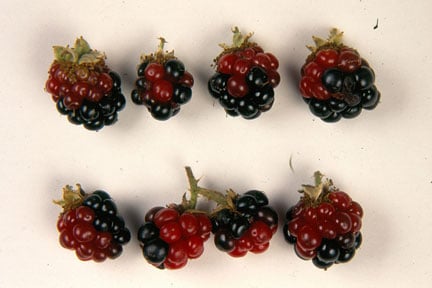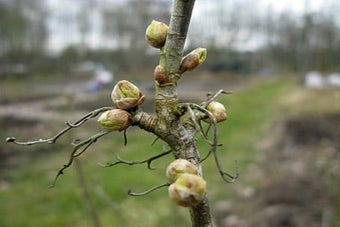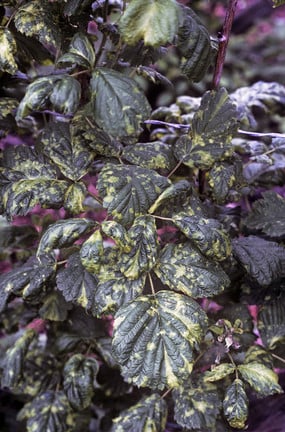
Quick facts
Common name - Red berry mite, blackberry mite, ‘red-berry’ disease
Scientific name - Acalitus essigi
Plants affected - Blackberries
Main symptoms - Uneven ripening of fruit
Most active - April-September
What is red berry mite?
Red berry mite is a microscopic (< 0.2 mm) whitish mite that sucks from flowers and fruit of blackberries, causing uneven ripening. It does not affect other fruits.
This mite is one of the gall mites, also known as eriophyid mites. These are minute animals usually less than 0.2 mm long when fully grown. They have elongate bodies and two pairs of legs, unlike other mites which have four pairs. Their size means they can usually only be seen with the aid of a microscope. For most species their presence is readily detected by the distinctive abnormal plant growths induced by their feeding activities. The red berry mite is unusual for these mites in that it doesn’t cause galling.
There are many species of eriophyid mite which are usually host specific this means that each species of mite will only feed on a single, or several closely related, plant species.
Eriophyid mites feed by sucking sap but while doing so secrete chemicals into the plant tissue that convert some of the normal (parenchyma) plant cells to tissues which can give rise to a range of growth forms. These then grow to produce the gall. The mites can then suck sap from plant cells lining the gall structure, which are invariably more nutritious than unaffected tissue, but often do not cause serious damage to the plant. The damage to fruit caused by red berry mite is an exception.
Symptoms
Red berry mites overwinter under scales and become active on the foliage during the spring. When in bloom the mites move onto the flowers and developing fruits.
The first fruits to develop usually ripen fully but later fruits show increasingly patchy ripening, with some parts of the berries remaining hard and red or green. The patchy ripening is sometimes referred to as ‘red-berry’ disease.
Management
There are no suitable controls available to home gardeners for the mite and so the damage has to be tolerated. Heavily affected canes can be cut to ground level as soon as the problem is noticed and disposed of as diseased material. Consider replacing canes with persistent problems of red berry mite.
Partly ripened berries can be used for cooking, making jam or wine.





